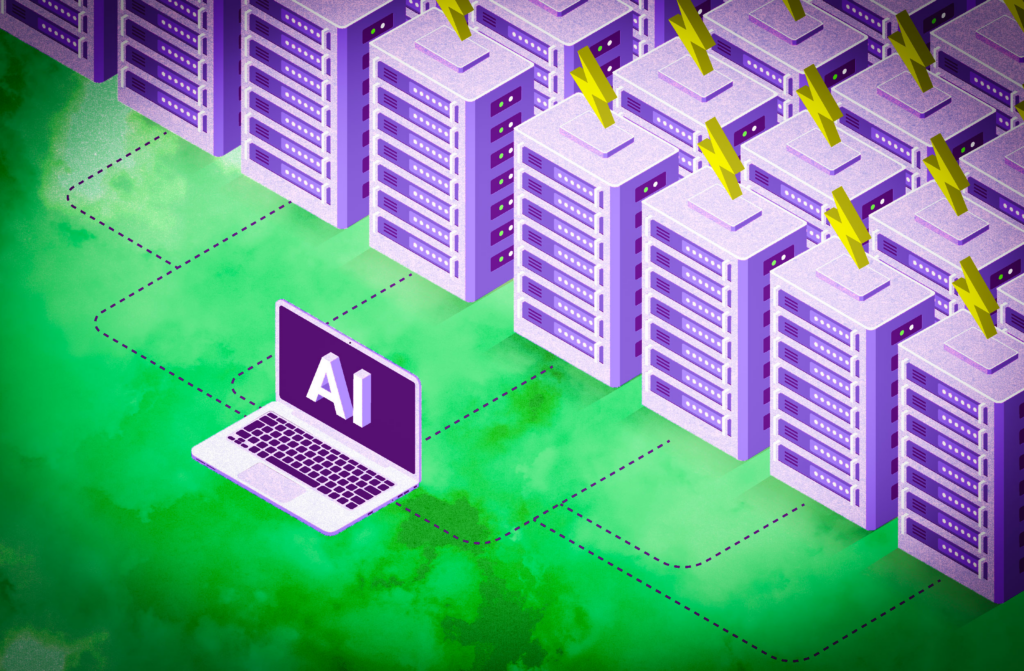
Generative AI has rapidly transformed from a novel innovation to a driving force behind digital creativity. Whether producing stunning artwork, human-like conversations, or even synthetic video, large-scale models like GPT-4, DALL·E, and Stable Diffusion are reshaping industries. However, as we marvel at their capabilities, one often-overlooked consequence is coming into sharper focus: the environmental cost of training and deploying large generative models.
This blog will explore the ecological footprint of generative AI—from the energy-intensive training process to the long-term emissions implications of model usage. We’ll also examine what’s being done to mitigate these effects and what more needs to happen to make AI more sustainable.
Why Generative AI Models Are Energy-Intensive
Training a large AI model is akin to launching a rocket—it requires enormous computing resources, often over weeks or months. Let’s break down the key reasons:
1. Large Datasets
Generative models are trained on massive datasets containing billions of tokens (for language) or images and videos (for visual generation). Processing these datasets repeatedly demands substantial energy.
2. Complex Architectures
Architectures like transformers (e.g., GPT, T5, BERT) involve deep neural networks with billions of parameters. Training such models involves trillions of operations.
3. Multiple Training Runs
Training often involves trial and error. Researchers typically train multiple versions of a model to tune hyperparameters, further increasing compute and energy usage.
4. Cloud Infrastructure
Most large models are trained on massive clusters of GPUs or TPUs housed in data centers. These facilities require not only power for computation but also for cooling and overhead systems.
Hidden Costs: Inference and Usage
While training gets most of the attention, inference (using the model to generate output) also consumes substantial resources—especially when millions of users interact with models daily.
A large language model in production may handle billions of queries per month. For example:
- ChatGPT reportedly serves over 100 million users, with each query requiring GPU compute.
- DALL·E-style image generation uses less data per prompt, but involves intense matrix operations to render high-resolution images.
Cumulatively, inference can surpass the energy costs of training over time, especially for popular APIs.
Efforts to Reduce the Environmental Impact
Thankfully, the AI research and engineering communities are aware of these concerns and have started taking action.
1. Green Data Centers
- Cloud providers like Google, Microsoft, and Amazon are investing in carbon-neutral or low-emission data centers powered by renewables.
- Some now provide region-based CO₂ metrics, allowing users to select low-impact options for training and deployment.
2. Model Optimization
Researchers are developing more efficient architectures:
- Distillation: Shrinks a large model into a smaller one with similar performance.
- Sparse models: Use fewer parameters or activate only parts of the network.
- Low-rank adaptation (LoRA): Fine-tunes large models efficiently with minimal resource use.
3. Training Efficiency Tools
- Frameworks like DeepSpeed and Hugging Face’s Accelerate improve training speed and energy efficiency.
- Tools like Carbontracker help monitor and reduce emissions during training.
4. Sharing Pretrained Models
Instead of training from scratch, many developers now use pretrained foundation models and fine-tune them, drastically reducing resource demands.
Best Practices for Developers
If you’re a data scientist or AI engineer, here are practical steps you can take:
Choose Efficient Models
Opt for models with fewer parameters when they meet performance needs. For many tasks, smaller models are good enough.
Use Green Cloud Regions
When using cloud services, choose regions powered by renewable energy (e.g., Google Cloud’s “carbon-intelligent” regions).
Optimize Batch Sizes and Precision
Use mixed precision training (e.g., FP16) and efficient batch sizes to reduce unnecessary computation.
Reuse and Share
Build on top of shared checkpoints rather than duplicating model training. Share your models and results to avoid redundant efforts.
Innovations on the Horizon
As the AI ecosystem matures, several innovations promise to reduce environmental impact:
- Neuromorphic chips inspired by the human brain could reduce power consumption drastically.
- Edge AI can shift compute to local devices, reducing the burden on cloud infrastructure.
- Synthetic data generation might reduce the need for massive real-world datasets, cutting training time.
The Role of Policy and Regulation
Governments and organizations can play a key role in guiding the future of sustainable AI:
1. Mandatory Emissions Reporting
Companies may be required to disclose energy and emissions figures for AI training runs, especially for large models.
2. Carbon Credits and Offsets
Initiatives can encourage developers to offset emissions via carbon credits or invest in renewable projects.
3. Funding Green AI Research
Public funding can be directed toward energy-efficient AI methods and sustainable hardware R&D.
4. Incentivizing Open Science
Encouraging open publication of datasets, model weights, and carbon metrics helps reduce duplication and boosts global efficiency.
Generative AI has unlocked powerful new ways to create, communicate, and solve problems—but these benefits come with real environmental costs. As our reliance on AI grows, so does our responsibility to manage its footprint.
By improving transparency, adopting green practices, and innovating toward more efficient methods, we can ensure that generative AI evolves sustainably.
The future of AI doesn’t just depend on smarter models—it depends on cleaner ones.